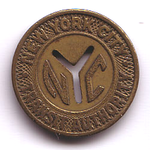 When the MTA hinted earlier this week that budgetary problems and concerns about inflation were going to drastically alter the Fulton St. Transit Hub plans, I figured the Second Ave. Subway would not be spared the proverbial knife as well. When MTA CEO Lee Sander said that MTA Capital Construction was looking to trim $1 billion from a few projects, I knew some aspect of the Second Ave. subway would have to go. Luckily, the cuts won’t be too bad.
When the MTA hinted earlier this week that budgetary problems and concerns about inflation were going to drastically alter the Fulton St. Transit Hub plans, I figured the Second Ave. Subway would not be spared the proverbial knife as well. When MTA CEO Lee Sander said that MTA Capital Construction was looking to trim $1 billion from a few projects, I knew some aspect of the Second Ave. subway would have to go. Luckily, the cuts won’t be too bad.
The cuts, you see, will eliminate a planned third track in the northern reaches of the planned tunnel, according to Pete Donohue of the Daily News. This third track, viewed as a luxury so that functional trains could bypass hypothetical stalled trains does not appear in the project’s Finale Environmental Impact Statement, and I have to believe that, due to the influx of federal funds, the Second Ave. Subway dodged a bullet.
According to the report, the number of stations in the subway line will thankfully stay the same, but this cut basically eliminates the possibility of any future express service along Second Ave. For a long time, subchatters and Second Ave. Subway proponents have debated the need for a third and fourth track under Second Ave. Why build a subway that’s only local, they argue?
I’ve long believed that the Second Ave. subway can and will succeed with just local stops. These stops are, after all, better spaced than the IRT stops from 100 years ago, and because the Second Ave. Subway will use longer trains than the IRT lines in Manhattan, exits from the stations can cover a wider range of blocks. For example, while the train will stop at 72nd St. and 86th St., thus bypassing the popular 79th St., passengers can exit from those stops at 74th St. and 83rd St., respectively. Walking those few blocks to the middle should be easy.
But New Yorkers long accustomed to false starts and sudden stops won’t see the project delayed. As Sander has stressed, the Second Ave. Subway will become a reality, and New Yorkers can thank the feds for that one. Because the Federal Transit Administration has promised funds for the project, the MTA will be able to construct Phase 1 of the Second Ave. Subway. It may not have those extra tracks; it may not be as opulently ornate as the MTA hopes. But it will provide much-needed relief for the East Side, and it will arrive this time.

















 Theodore Kheel, the 93-year-old public advocate with a lot of money and a hate of traffic, unveiled his much-anticipated transit fare-congestion pricing report on Thursday. The report — entitled Balancing: Free Transit and Congestion Pricing in New York City — is the culmination of an 11-month, $100,000 effort funded by Kheel.
Theodore Kheel, the 93-year-old public advocate with a lot of money and a hate of traffic, unveiled his much-anticipated transit fare-congestion pricing report on Thursday. The report — entitled Balancing: Free Transit and Congestion Pricing in New York City — is the culmination of an 11-month, $100,000 effort funded by Kheel.  I’ve been getting a little wonky around these parts lately. After the fare hike to-do last month, transit news has slowed down a bit, and I promise that a few lighthearted posts are in the chute. For now, keep on indulging me, and good times — as well as a fare hike — are right around the corner.
I’ve been getting a little wonky around these parts lately. After the fare hike to-do last month, transit news has slowed down a bit, and I promise that a few lighthearted posts are in the chute. For now, keep on indulging me, and good times — as well as a fare hike — are right around the corner. Let’s pretend it’s the middle of December, about 24-48 before everyone heads out of work for a ten-day vacation. Would you say that’s a good time to drop a major technological upgrade onto expectant customers?
Let’s pretend it’s the middle of December, about 24-48 before everyone heads out of work for a ten-day vacation. Would you say that’s a good time to drop a major technological upgrade onto expectant customers?